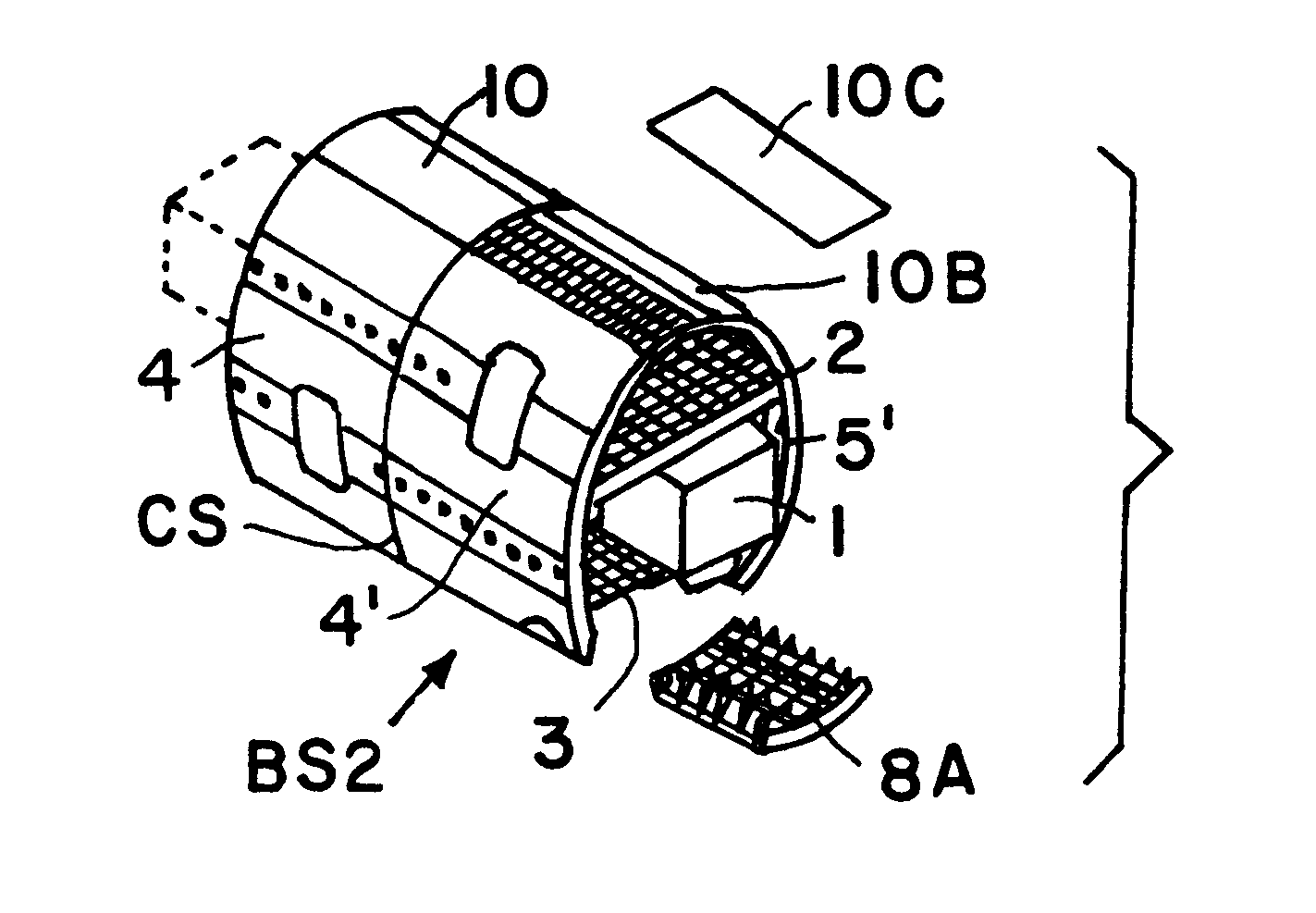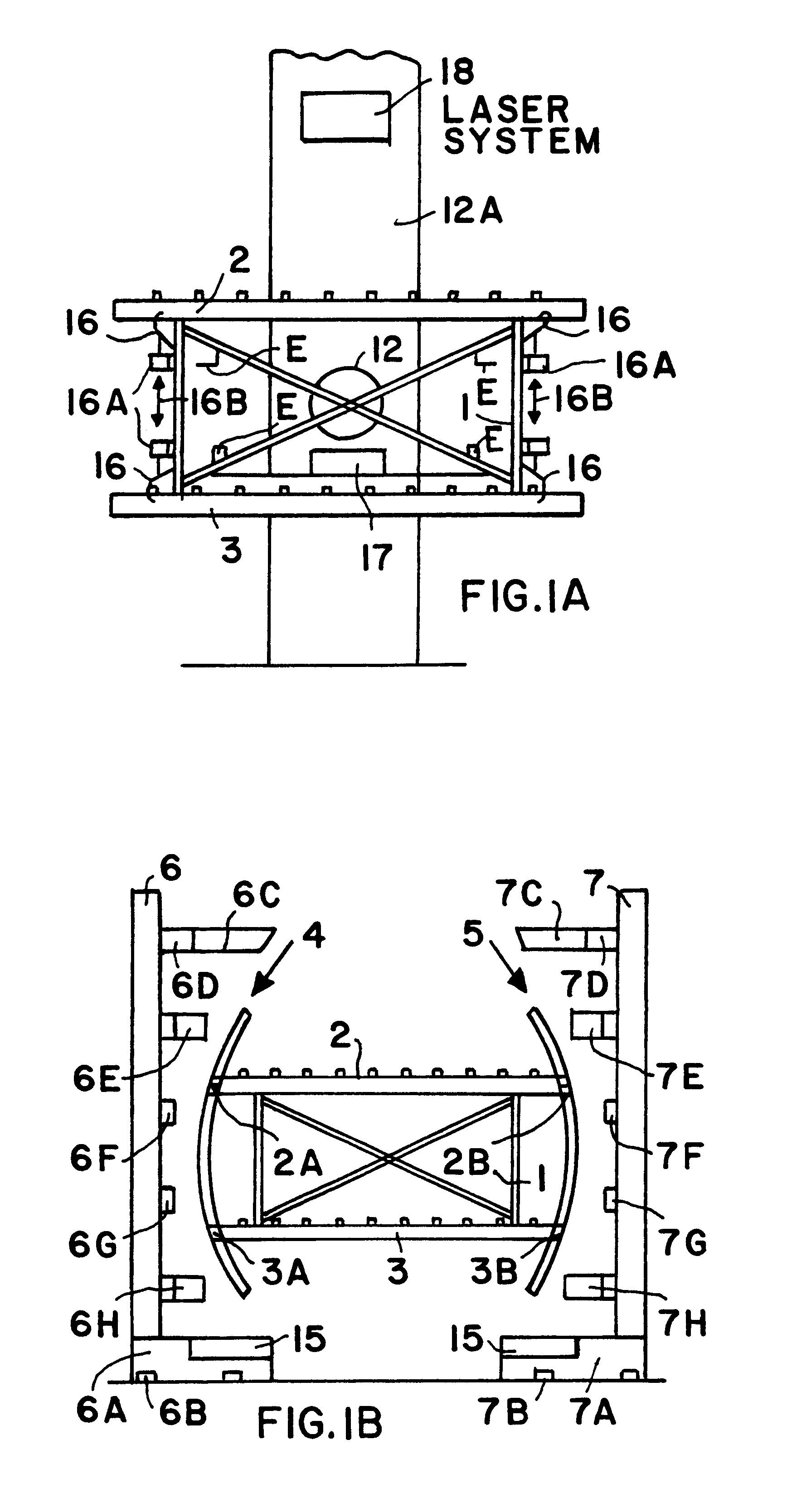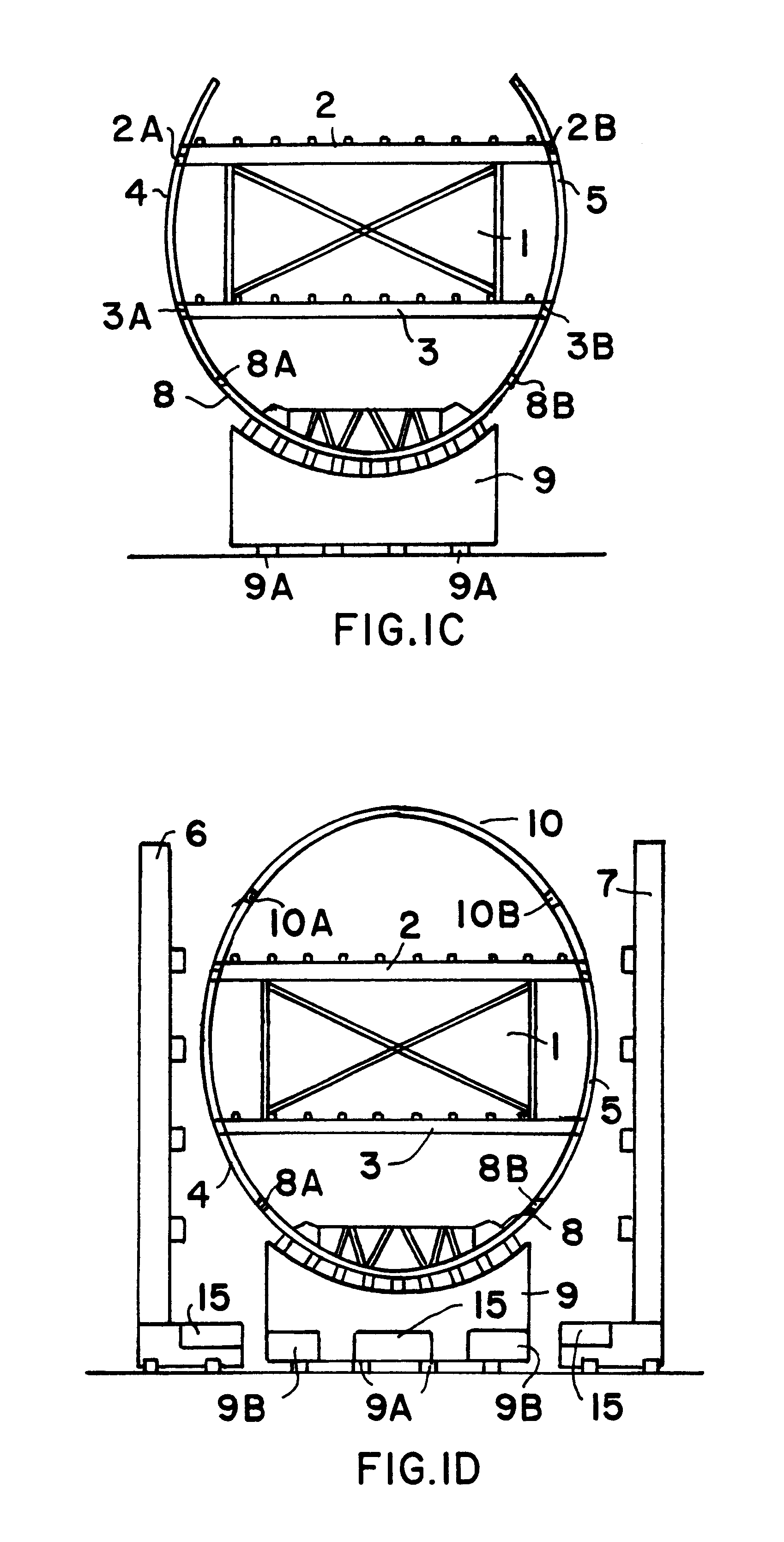Method for assembling a three-dimensional structural component
a three-dimensional structural and component technology, applied in the field of three-dimensional structural components, can solve the problems of inability to adjust the individual sub-assemblies in order to ensure the desired overall geometry of the aircraft fuselage, inability to correct, and possible positional deviations of the floor structure relative to the fuselage body, so as to achieve precise tolerance ranges and increase the accessibility of tools.
- Summary
- Abstract
- Description
- Claims
- Application Information
AI Technical Summary
Benefits of technology
Problems solved by technology
Method used
Image
Examples
Embodiment Construction
FIG. 1A illustrates the first stage in which a longitudinal central assembly core 1 is secured with its far end to a core mounting 12 forming part of a mounting column 12A. The opposite end of the central assembly core 1 is held in place by a further core mounting including a core guide 13 in a mounting column 13A to be described below with reference to FIG. 2. The central axis of the central assembly core 1 coincides with and extends in the direction of the central longitudinal axis of an aircraft fuselage not shown in FIG. 1. Preferably, the central assembly core 1 has a rectangular cross-section. An aircraft fuselage having two decks requires an upper or first floor support grid 2 and a lower or second floor support grid 3. The grids 2, 3 are mechanically secured in a releasable manner to the central assembly core 1 by symbolically shown clamping tools 16 driven by clamp drives 16A which in turn are controlled by a computer 17. A laser distance measuring system 18 is positioned f...
PUM
| Property | Measurement | Unit |
|---|---|---|
| volume | aaaaa | aaaaa |
| surface area | aaaaa | aaaaa |
| length | aaaaa | aaaaa |
Abstract
Description
Claims
Application Information
 Login to View More
Login to View More - R&D
- Intellectual Property
- Life Sciences
- Materials
- Tech Scout
- Unparalleled Data Quality
- Higher Quality Content
- 60% Fewer Hallucinations
Browse by: Latest US Patents, China's latest patents, Technical Efficacy Thesaurus, Application Domain, Technology Topic, Popular Technical Reports.
© 2025 PatSnap. All rights reserved.Legal|Privacy policy|Modern Slavery Act Transparency Statement|Sitemap|About US| Contact US: help@patsnap.com



